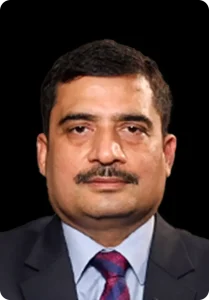India stands to gain with more players participating in coalbed methane (CBM) production, and more competition may benefit industry players, Pankaj Kalra, Chief Executive Officer, Essar Oil and Gas Exploration and Production Limited (EOGEPL), told Moneycontrol.
The company plans to invest Rs 1,800 to Rs 2,000 crore over the next two to three years on its flagship Ranigunj block, he said.
Billionaires Shashi Ruia and Ravi Ruia, commonly referred to as the Ruia Brothers, sold their oil refinery and fuel retail arm, Essar Oil, to Russia’s largest energy company, Rosneft, and its partners for around $13 billion in 2017. EOGEPL is Essar Group’s exploration & production (E&P) company in India, primarily focused on unconventional hydrocarbons, and currently produces 65 percent of India’s total CBM output.
Kalra said he was not perturbed by competition. More players investing in the sector would ensure that the country’s overall gas production would increase, which would in turn help India reduce its import bill, he said.
“The CBM segment is not a limited market. It is a subset of the larger gas market which has a very meaningful play in the overall energy basket mix of the country. Unlike sectors like FMCG or telecom, one does not need to eat into the other’s share given the penetration levels. India imports 45 percent of its gas requirements. And so, there is enough and more room for everyone to grow. Here, the competition within India will not be a matter of concern as that will enable India to become self-reliant and save the exchequer (foreign exchange) by substituting imports,” said Kalra.
Any gas that is imported by India will be at least $4-$5 more expensive than the gas that has been produced in India. So, it (domestic gas) will only replace foreign gas or imported gas. So, it will be good for India; it will be good even for Indian players,” he added.
India is dependent on imports for around 50 percent of its natural gas requirements. The Indian government has been pushing to boost domestic production as it aims to increase the share of gas to 15 percent of the country’s energy mix by 2030 from the current 6 percent. Coalbed methane is an unconventional form of natural gas found in coal deposits or coal seams.
Kalra also said that EOGEPL would look into the new CBM blocks as and when they come up for bidding.
Energy majors like Reliance Industries Limited (RIL) and Oil and Natural Gas Corporation (ONGC) are also giving a push to CBM production and have plans to scale up output.
Outlook on energy prices
Kalra expects energy prices to rise in the winter season. He expects crude oil prices to be in the range of $80-$85 per barrel and gas prices to be around $9-$11 per metric million British thermal unit (mmBtu).
Crude oil prices were trading at $90 per barrel on September 9 after Saudi Arabia and Russia announced fresh supply cuts, while natural gas prices were trading around $13 per mmBtu.
“There are a lot of geopolitical factors at play. As the winter months approach, generally, the prices of oil and gas tend to go up because a significant amount of that is used for heating in large parts of Europe and Northern Asia, including Japan, Korea, China, and other countries. So, what one has seen typically is that (in) the winter months, starting in October, gas and oil prices tend to move up,” he said.
Capex and growth
The company’s growth will be driven by its flagship Ranigunj block, where it plans to invest Rs 1,800 to Rs 2,000 crore over the next two to three years.
The company plans capex of Rs 480 crore in the financial year 2023-24 (FY24), which would be financed through internal accruals.
EOGEPL expects volume growth of 6-7 percent every quarter, said Kalra. He said the company’s plan is to drill additional wells so that it can ensure that the increase in production is further upheld.
In the first quarter of FY24, the company’s profit increased 12 percent, backed by an improvement in sales volume.
Other than increased sales, Kalra said the company optimised its costs by digitising its wells.
“We have automated all our wells. We are the first company in India to do so. That has reduced the number of workers that were required. We have optimised and fine-tuned our costs further. Our EBITDA margin today stands at almost 79.8 percent. There’s been a lot of focus on making sure that cost remains well under control. And at the same time, we are ensuring that production is enhanced. So, the entire team is focused on enhancing production and ensuring that cost remains well under control,” he said.
Technological advancements
Kalra said the company has deployed several technologies and partnered with global players to improve the efficiency of its wells.
“Most of the intervention that we do can be done within the office itself, instead of people going onto the site. So, the manual intervention has been reduced. It has also improved the efficiency and throughput of our wells. The need for work-over at our wells has drastically come down,” he said.
He added that EOGEPL has also partnered with global experts such as Sensia, a leading provider of digitalisation solutions, to enhance operations through the deployment of Sensia’s Avalon digital platform interface.
Sensia’s Avalon platform offers a comprehensive interface that simplifies the capture, analysis, and digitalisation of well-related activities, facility-related activities, and customer-end operations.
EOGEPL has also signed a memorandum of understanding (MoU) with Australian energy company Galilee Energy in July 2023 for technical assistance.
The companies had signed the MoU to explore coalbed methane in Raniganj and Galilee Energy’s Glenaras gas project.














































